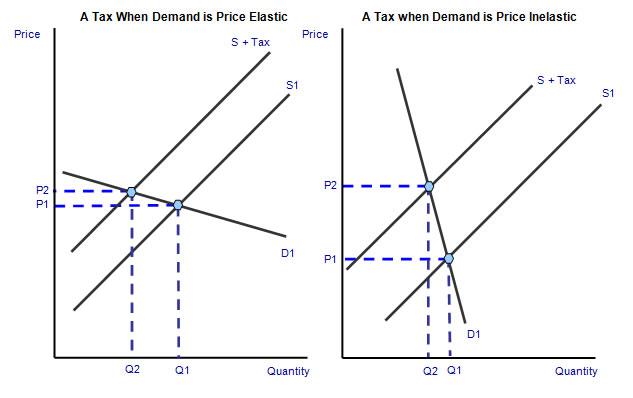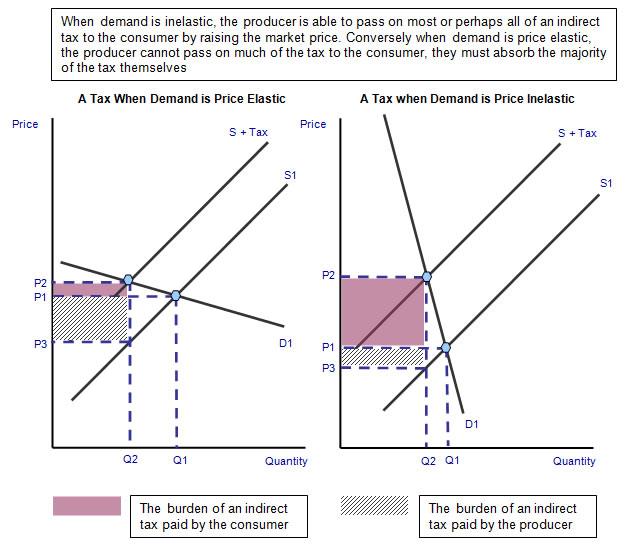Indirect Taxes and Elasticity
There is an inward shift in the supply curve as the indirect tax increases the cost of production
The diagrams above show that if a good is price inelastic then the government will gain tax revenue. This is because the relative percentage change in quantity demanded is less than the relative percentage change of price. However, when taxing a good that is price elastic then the government may lose tax revenue from this good. An increase in tax for goods that are price elastic will lead to a greater decrease in the relative percentage of quantity demanded in comparison to the price. Hence, this shows the importance of elasticity of demand in determining the effects of a tax on price and quantity.
Examples of good that are price inelastic: Cigarettes, alcohol, petrol and food
In the UK, in January 2011, there was concern over a VAT rise from 17.5% to 20%. The UK has one of the highest indirect tax rates in the world. Businesses have said this could lead to greater unemployment and could actually lead to tax revenue for the government.
Video: http://www.bbc.co.uk/news/business-12106663
Direct Taxation Versus Indirect Taxation:
Arguments against indirect taxation:
- As indirect taxes are regressive in nature it could be argued that they create greater inequality in society and widen the gap between rich and poor.
- Higher indirect taxes may lead to cost-push inflation
- People be unaware of how much they are paying in VAT which goes against the idea that taxes should be transparent.
Arguments for indirect taxation:
- Indirect taxation can be used to correct externalities
- Indirect taxes provide an incentive to save and provide finance for investment
- Indirect taxes leave people with a choice whereas direct taxes do not

